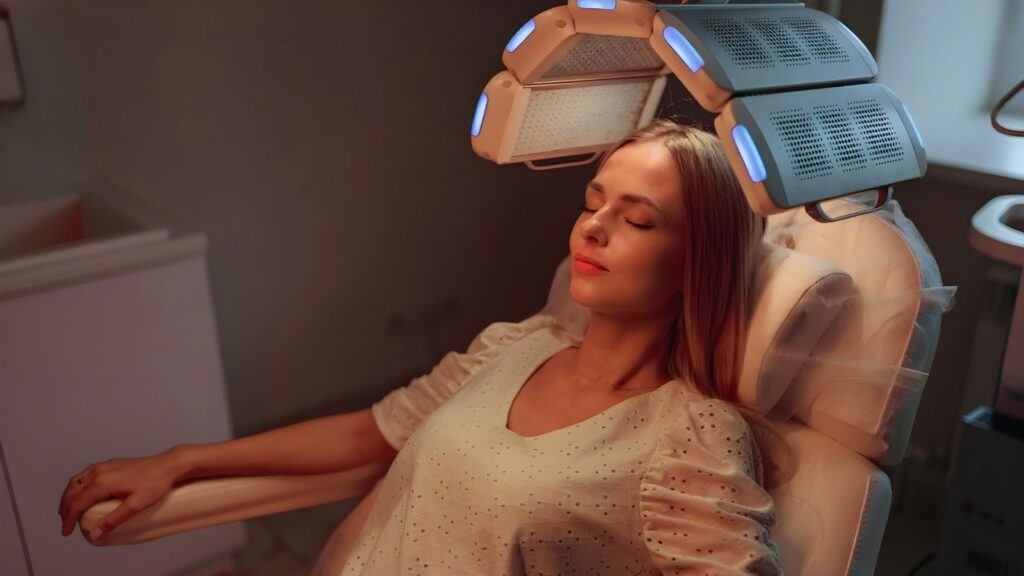Neuropathy affects millions of people, causing pain in nerves, numbness, and tingling that can disrupt daily life. With limited treatment options, many are turning to red light therapy as a potential solution. Interest continues to grow in how this advanced modality might support relief and recovery.
This article explores how red light therapy works, its benefits for peripheral neuropathy, and what current research says about using red or near-infrared light for neuropathy treatment.

Understanding Neuropathy and Its Impact
Neuropathy occurs when damage to the peripheral nerves disrupts communication between the brain and the rest of the body. It can be caused by diabetes, chemotherapy, infections, injuries, or autoimmune disorders. Symptoms include burning, tingling, numbness, or sharp pain, often in the hands or feet.
Diabetic neuropathy is one of the most common forms. For many, managing chronic discomfort is a daily challenge. Traditional treatment typically involves medication, physical therapy, and lifestyle changes. Today, advanced alternative options like red light therapy have recently gained attention for their ability to support the stimulation of nerve recovery and reduce pain without the side effects of medication.
How Red Light Therapy Works for Neuropathy
Red light therapy, also known as low-level laser therapy, uses specific wavelengths of red and near-infrared light to stimulate cellular repair. The exposure to it is believed to enhance mitochondrial function, boost circulation, and support nerve health.
Light therapy is a non-invasive treatment that can be administered using panels, handheld devices, or professional-grade red light therapy beds. The idea is that specific wavelengths of light penetrate the skin and reach damaged tissues, including peripheral nerves, encouraging healing.
Research indicates that red and near-infrared light may support ATP production at the cellular level, which could assist with tissue repair. For people suffering from painful diabetic peripheral neuropathy or other forms of sensory disturbances, this approach offers a promising path toward relief.
Potential Benefits of Red Light Therapy for Neuropathy Relief
The benefits of red light therapy for neuropathy patients are centered around pain relief, reduced inflammation, and improved nerve function. It has been shown that red light therapy may help alleviate neuropathy symptoms, including burning or tingling sensations in the extremities.
Emerging evidence suggests that red light therapy significantly reduces pain associated with neuropathy while promoting nerve regeneration. This approach continues to show potential, especially for those exploring complementary options when traditional treatments provide limited relief.
In addition to its pain-reducing effects, this enhances blood flow and supports tissue repair. For individuals dealing with foot-related pain, light therapy can target the affected area directly.

Scientific Support and Limitations of Red Light Therapy
Research into red light therapy and neuropathy is growing, though more large-scale studies are still needed. Some trials have shown that red light therapy helps alleviate symptoms of peripheral neuropathy, especially in diabetic populations.
It has been associated with reduced nerve pain, less inflammation, and signs of enhanced function in some individuals. Many users report improved comfort and sensation, suggesting potential for supporting the restoration of normal sensory function.
That said, results can vary depending on factors like session consistency, severity of symptoms, and the type of device used. Because not all red light therapy devices deliver the same depth of light penetration, it’s important to seek guidance from a trained provider to ensure therapy is used safely and effectively.
Using Red Light Therapy for Treating Neuropathy
Red light therapy sessions are generally short, lasting 10 to 20 minutes per treatment area, and can be done several times a week. While at-home devices are available, professional clinics often use higher-powered equipment for deeper light penetration.
For patients with diabetic neuropathy, targeted red light therapy treatment may offer localized pain relief and support nerve regeneration in the lower extremities. It is especially useful for reaching deeper tissues and stimulating healing in areas affected by this condition.
Therapy should be approached with a comprehensive care plan. Red light therapy works best when combined with other supportive practices such as proper nutrition, regular exercise, and medical guidance. By utilizing specific wavelengths of red light, it can promote healing and reduce pain associated with neuropathy.
Final Thoughts from Quantum Wellness Center
Red light therapy has shown promise as a complementary treatment for neuropathy. By stimulating cellular repair and improving nerve health, it may help with pain reduction, inflammation, and discomfort in individuals suffering from peripheral damage.
At Quantum Wellness Center, we recognize the complexity of chronic discomfort and provide non-invasive therapies that align with modern wellness approaches. By incorporating advanced modalities such as red light therapy, we aim to support the body’s natural recovery processes and offer practical options for individuals seeking sustainable relief and improved well-being.



